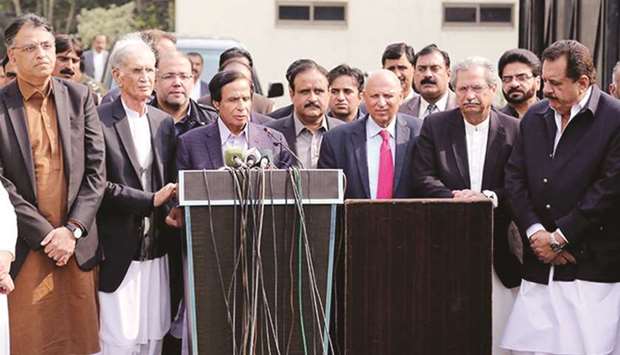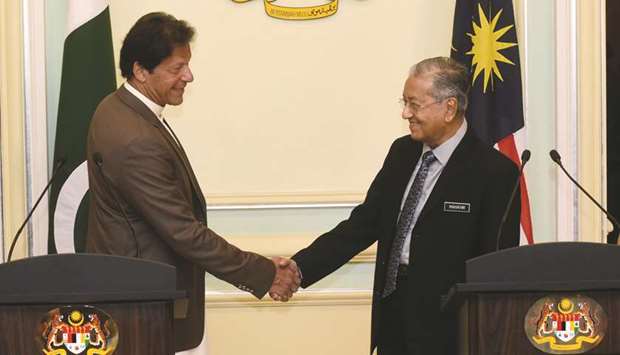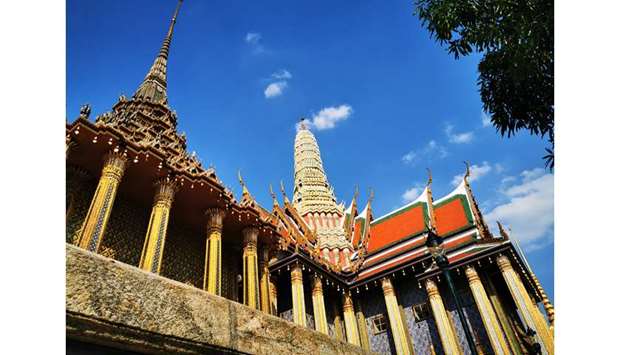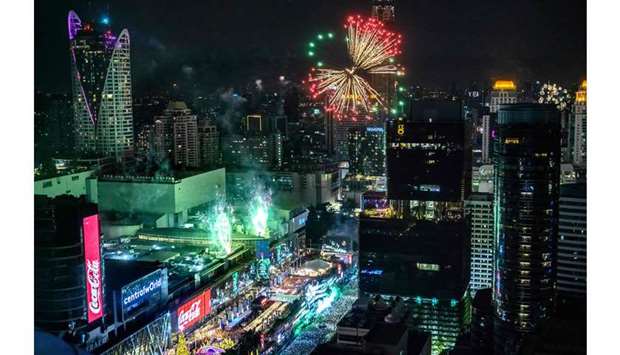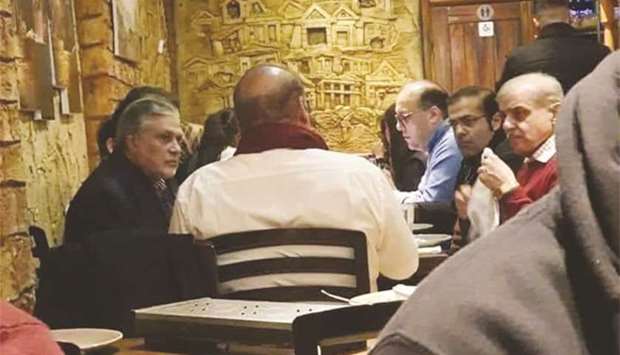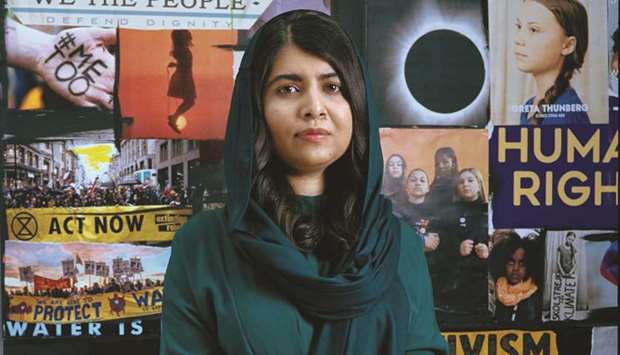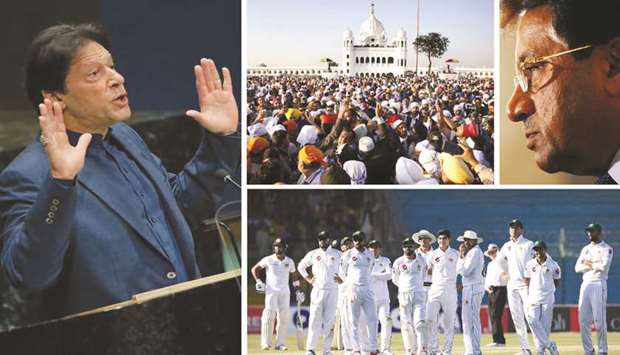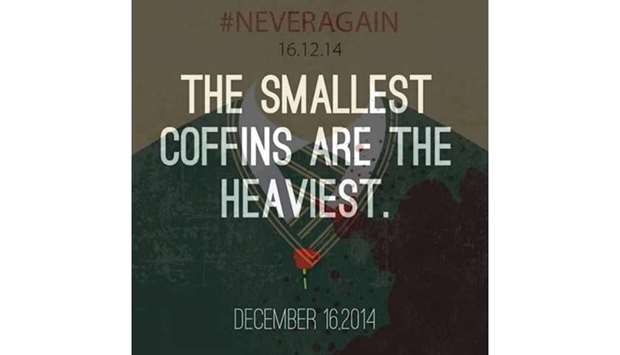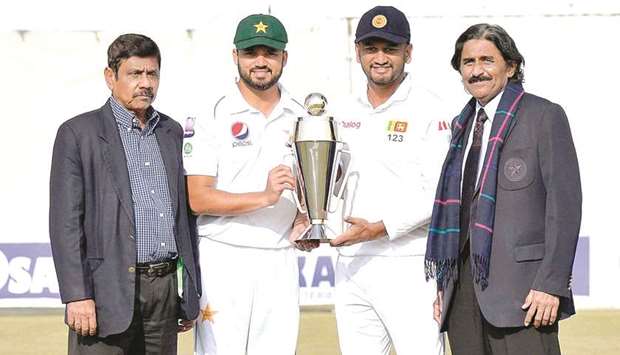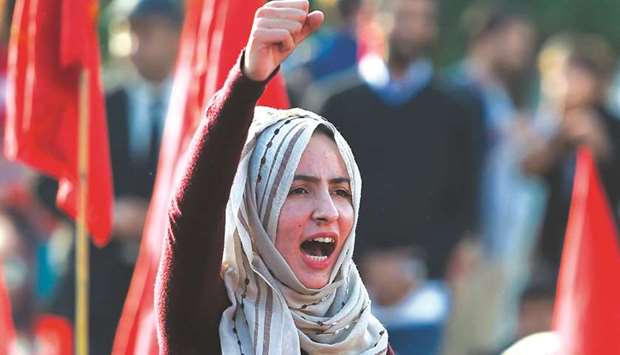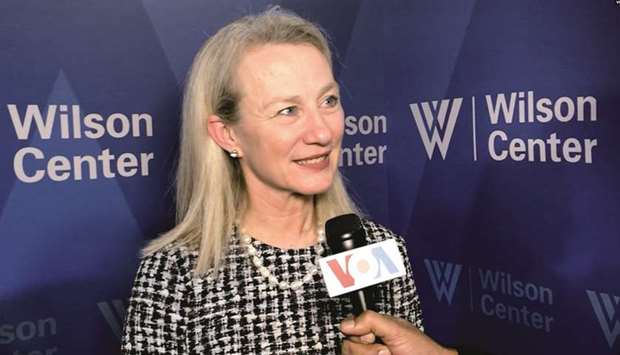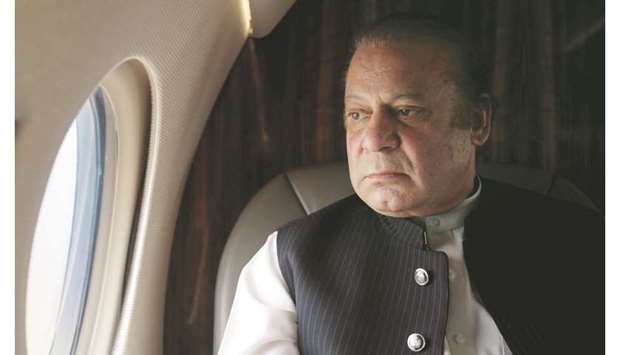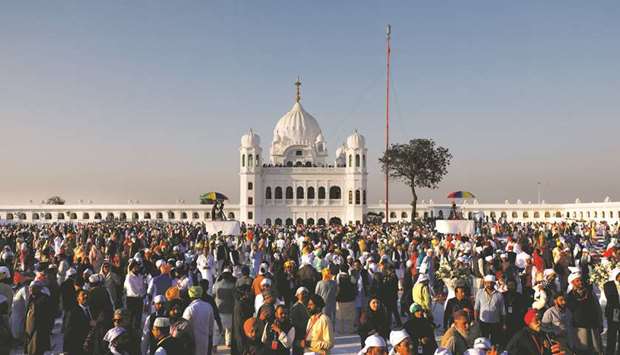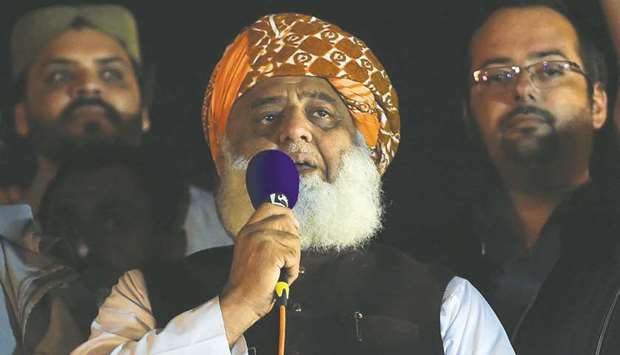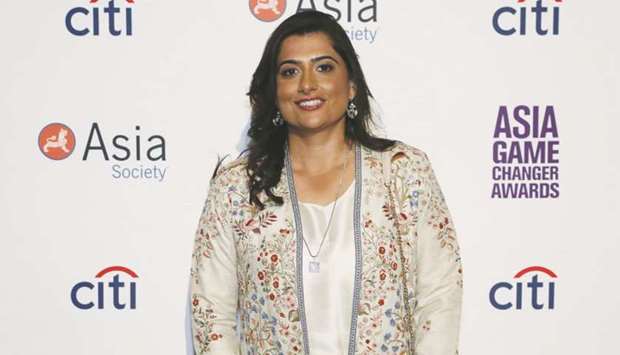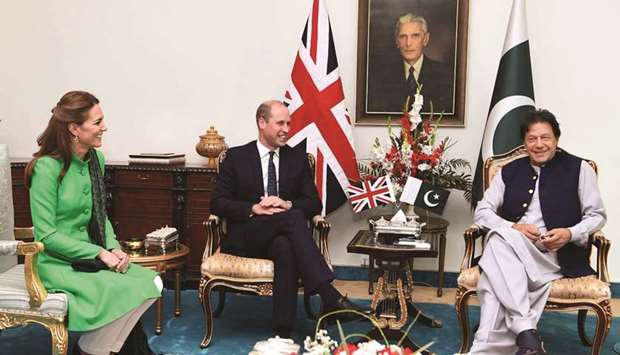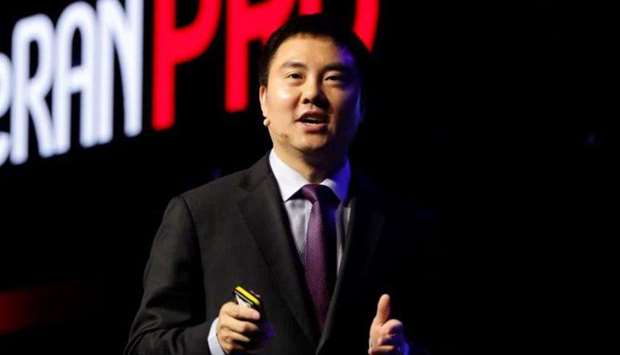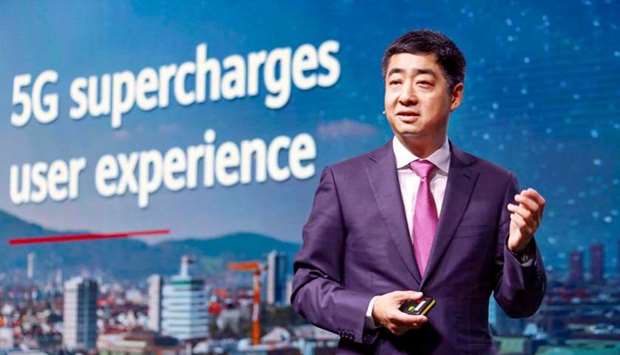Thailand — that Land of Smiles — is amongst a handful of countries that probably can afford to do even without any roadshow to promote its touristy avatar. Why, it already counts as one of the world’s premier destinations. But, of course that has never stopped it from always looking out to improve and make the tourist at home with all the wonders of vacation. There is however, so much more to the country than just those exotic resorts and azure waters that take your breath away — some distance removed from the urban heat.
My latest visit came as part of a media tour recently, where we travelled northwards after the familiar Bangkok round. A round-up of what was in store is in order. Space constraints mean this piece, for all its pull, may still be restrictive in some ways. But you get the drift. Should be enough to push you to explore in ways similar or better!
The Grand Palace
No visit to Bangkok is complete without a visit to The Grand Palace. In fact, be prepared to be intimidated! There’s a rich vein of history at every turn and with grandeur to boot. Stunning structures of great artistry will simply blow you away. It’s all so well preserved that it’s hard to fathom that the complex was established way back in 1782 — made up of royal and throne halls, government offices and the renowned Temple of the Emerald Buddha. It covers an area of 218,000 square metres and is surrounded by four walls, totaling 1,900 metres in length. The palace was built after the accession of King Rama I. Prior to this, the royal palace and centre of administration had been located in Thonburi, on the west bank of the Chao Phraya River. The new monarch decided to establish a new capital on the opposite side of the river. By his royal command, a palace was built to serve not only as his residence but also as the site of administrative offices. The royal compound has been known since then as The Grand Palace.
The robes on the Buddha are changed with the seasons by the king — an important ritual in the Buddhist calendar. Thai kings stopped living in the palace around the turn of the 20th century, but the palace complex is still used to mark all kinds of other ceremonial and auspicious events.
Chakrapong Mosque
Chakrapong Mosque is a historic mosque located in Bang Lamphu, Phra Nakhon district of Bangkok. It was built by locals who migrated from the southern province of Pattani due to the war in the reign of King Rama I in the Rattanakosin period. Originally, the mosque had a one-storey wooden house used for religious teaching and ceremony, and a minaret used for calling prayers. After renovation, the mosque became a two-storey concrete building with mixed Arabic and Persian décor, which is simple but was renamed to coincide with the Chakrabongse road, where it was located. The building’s components such as the stencil of wooden windows and the minbar (place where the imam sits) — are made of teak and assembled together without nails, showing the craftsmanship and expertise of the old generations. There are two large clocks that have been installed since the first year that these were introduced into Thailand. The mosque also houses a Thai translation of the Quran initiated by His Majesty King Bhumibol Adulyadej The Great.
Metro Forest
A man-made forest in eastern Bangkok, The Metro-Forest — or simply ‘A Forest in the City’, it is a relatively new eco-tourism spot which inspires you to new heights. The project aims to help visitors of all ages recognise the importance of urban forests and motivate them to plant trees in their homes. One of the most impressive features is the skywalk and the 23-metre high observation tower. The tower not only offers a unique vantage point to admire all the green space, but also protects the 279 native plant species in the forest below. The site constitutes 75% natural forests, 10% water resources and the rest houses a multipurpose area and exhibition venue.
The buildings here are designed to be in line with ecology, enriching the area and connecting humanity with nature. A true inspiration to the inner green activist in you, be sure to see the natural forest, rammed earth wall, seed wall, exhibition room, mini theatre that even opens into the green expanse after you’ve watched a helpful documentary, roof garden, sky walk, observation tower and a PV cell.
Phyathai 2 Hospital
Thailand is a choice destination for medical tourism. There are a number of medical facilities offering specialised treatment, relaxed stay and post-op procedures — all at an affordable cost. One such facility is the Phyathai 2 Hospital in Bangkok. For more than three decades, it has been a leading source of satisfactory services with its state-of-the-art technology coupled with the signature Thai hospitality. Consisting of two buildings joined by a walkway, the hospital provides healthcare under the avowed mission to deliver the best possible care.
Our team was able to visit a wide spectrum of these facilities with a detailed presentation given by its management and panel of expert doctors and surgeons. While the exceptional level of service was evident, what stands out is its excellent green credentials.
Each year, thousands of patients from all over the world come to 550-bed Phyathai 2 Hospital, seeking consultation, a second opinion and medical treatment in a world class environment — right from the provision of convenient communication channels in their language of choice to the end of last treatment. The average number of outpatients is 50,000 per month and in-patients 1,600 per month. It was the first hospital to receive accreditation for high-quality assurance and customer satisfaction and a plethora of awards such as the most trusted hospital in Thailand in 2007, Thailand Energy Award 2010, ASEAN Energy Award 2011, ISO 14001(Environmental Management), ISO 50001(Energy Management), etc.
Mae Fah Luang Foundation under Royal Patronage
The not-for-profit organisation was inspired by Princess Srinagarindra — also known as the Princess Mother with happiness, sustainability and stability at its core. The foundation fosters stainable development — economically, socially, culturally and environmentally by implementing development projects; integrating and collaborating with strategic partners; providing consultation and imparting training.
The foundation has a 3S Model development framework divided into three phases: survival, sufficiency and sustainability to ‘help the people help themselves. In 1988, the foundation undertook the Doi Tung Development Project, which has become the recognised sustainable development model in Thailand and the world.
Doi Tung Development Project
It’s hard not to be impressed by the dedication and commitment of the Thai Royal Family and the unreserved love of their people, especially those at the bottom rung of the ladder. One towering figure was Princess Srinagarindra, the Princess Mother of His Majesty King Bhumibol Adulyadej The Great, who established the Doi Tung Development Project, one of the flagship projects of the Mae Fah Luang Foundation, in 1988 on Doi Tung, a high mountain in the northernmost province of Chiang Rai. The project area covers approximately 15,000 hectares, benefiting approximately 11,000 people from 29 villages. Doi Tung was once a secluded area in the heart of the Golden Triangle — a hub of illicit opium production. The problems of Doi Tung were complex. The watershed area was denuded by slash and burn cultivation, and further accelerated by opium growing.
The residents were of six ethnic groups without Thai citizenship. They struggled to survive without infrastructure or government support. Armed groups occupied parts of the area, which made it even more difficult for government officials to provide any assistance to the local residents. The Princess Mother decided to improve the conditions of Doi Tung, socially, economically, and environmentally, commitment by building her home in Doi Tung, giving hope to the ethnic minorities and providing opportunities for all people regardless of race, religion, or nationality. Her vision was to allow people and nature to coexist in harmony, by aligning the people’s interests with the preservation of the natural environment and providing opportunities for all, regardless of race or religion.
The Hall of Inspiration
This is a stunning mixed-media exhibition that compiles the history of the Mahidol royal family, the parenting principles of the Princess Mother, who raised two sons and a daughter to be loved by the people — owed no doubt to a phenomenal 4,000 plus royally initiated projects of King Rama IX — the last monarch. The exhibition is a worthy tribute to those services.
The Colours of Doi Tung Festival
If natural colours were to decide the outlook of a tourist country, you could look no further than perhaps, the Mae Fah Luang Garden, resplendent as it is with a sea of colourful flowers, plants and trees. But like elsewhere, natural beauty is not the only thing that catches your eye. Also competing for your attention are sideway stalls selling food of the indigenous variety — including seeds — and ethnic wear stalls with plenty of cultural vistas all around. We were lucky in that we stepped into the last two days of a two-month long annual Family-Friendly Festival!
The Hall of Opium
How many countries can boast of success as sweeping as Thailand in eliminating the menace of drug trade that made the Golden Triangle — a border area surrounding the country and neighbouring Laos and Myanmar — quite the global hub of poppy fields, drug smugglers and opium warlords throughout the Sixties to the early Nineties?
The Princess Mother also expressed her desire to educate people on the background of opium, and the Hall of Opium was created as a result.
The Hall of Opium is one impressive entity and it beggars belief not to bet on coming out a changed person: the sheer scale of history, genesis of the trade and more significantly, the pitfalls of indulgence with more relatable figures of modern history affected by it leave you plenty of room for reflection.
While intended for people of all ages and all nationalities, the target audience of the Hall of Opium is teens and young adults, the most susceptible to the lure of illegal drugs, to show them how opium addiction became a world-wide problem, and how drug abuse affects individuals, their families, neighbourhoods, and even country.
Covering an area of 5,600 square meters, the exhibition in the Hall of Opium is the result of almost a decade of research. Here visitors learn about the 5,000-year history of opium: how it was a drug to treat illnesses, how its use spread throughout the world, how imperialist expansion used opium in the economic colonisation and control of China, and how it eventually came to dominate the Golden Triangle as well as other parts of the world such as Afghanistan. Visitors also learn about current issues of addiction and illegal drugs, efforts to control drugs, and the impacts of drug abuse and addiction.
Prince Chakrabandh Pensiri Center
This was easily one of the highlights of the trip. The plantation had a picturesque setting — long rows of green plantation contrasting the blue yonder. The staff duly explained the key project that aims to improve and develop plant varieties and produce high quality seed that can resist diseases and pests. The centre sprang from Her Royal Highness Princess Maha Chakri Sirindhorn’s decision to designate the Chaipattana Foundation in commemoration of the 100th birthday anniversary of His Highness Prince Chakrabandh Pensiri, who was an extinguished scholar. The plant varieties are adequately developed and selected so they can generate fine quality of produce for local households. Apart from serving as a centre for plant development, it offers visitors a place to relax and enjoy the majestic scenery. Rows and rows of fresh organic fruits and vegetables are enough to tempt the inner foodie in you. Just as well that we had a taste of Nature’s gifts at the nearby Jun Ka Pak restaurant serving Thai and fusion cuisine.
Chiang Rai Night Bazaar
The experience was like a calling to live in the spirit of the moment. For some time, we almost forgot it was a bazaar with plenty to enthuse the average Joe: from the sheer variety of street food to made-to-order souvenirs to regular wear. A large assembly of people — of all ages, some past their primes — were dancing and singing to the beat of a group belting out numbers onstage not far from the stalls. It was the perfect setting past the sunset after a busy day. For the discerning traveler, there’s a range of hill-tribe craft such as knitted scarves, embroidered bags, silver jewellery, bed spreads, wallets and fashion accessories along with tees, sneakers as well as sculptural art and handicraft.
Karen Long Neck Village
There are various village locations between Chiang Mai and the Golden Triangle, and our group was able to visit one on the last day of the visit where the famous hill tribespeople were busy selling wide-ranging ethnic articles. The outstanding feature, which they are known for, of course, are the brass rings that girls and women wear. At first look, you might wonder how this can at all be conceived as an idea of beauty — long necks — let alone worn for an entire life, but there it is. They seemed at peace with it, even female children. The idea is to start before puberty so that the body gets used to it.
My takeaway from the Long Neck Karen Village? Hard working people, in the throes of life’s struggles like elsewhere, but doing so with a smile. When I slipped into a de rigueur impulse to seek a discount for a souvenir, the seller politely declined, then argued that she had spent hours making it. It felt good to honour the labour of love.


